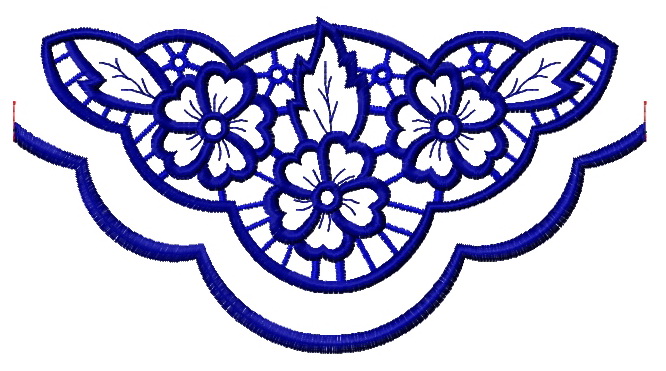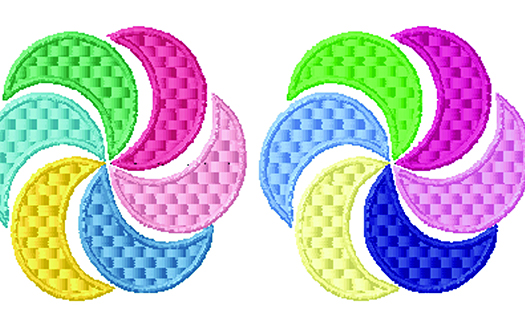
Cutwork embroidery stands out as a unique technique, combining the delicate craft of stitching with the boldness of negative space. In this comprehensive guide, we will explore six distinctive techniques to elevate your cutwork embroidery projects to new heights. From traditional methods to modern innovations, each approach offers a gateway to stunning, one-of-a-kind creations.
1. Classic Cutwork Embroidery: A Timeless Artistry
Classic Cutwork Embroidery is a timeless needlework technique that involves creating openwork designs by carefully cutting away sections of fabric. This exquisite art form has deep historical roots, dating back centuries, and showcases the meticulous craftsmanship passed down through generations. The process typically begins with selecting a high-quality fabric and preparing a detailed design.
To execute Classic Cutwork, a set of essential techniques, tools, and stitches come into play. The first step involves marking the fabric with the chosen design, often incorporating elements like eyelets, geometric patterns, or floral motifs. Tools such as sharp embroidery scissors and a hoop to keep the fabric taut are fundamental. The meticulous cutting of the fabric follows the outlined design, requiring precision to achieve clean lines and intricate details.
Stitches in Classic Cutwork Embroidery play a crucial role in securing the remaining fabric and adding embellishments. Common stitches include the satin stitch for outlining, buttonhole stitches to prevent fraying, and various filling stitches to enhance the overall aesthetic. The combination of these techniques and tools results in a classic cutwork masterpiece that exudes elegance and showcases the rich heritage of this enduring embroidery style.
2. Whitework Wonders: Sublime Simplicity in Cutwork Embroidery
Whitework Wonders in embroidery represent a captivating approach where the absence of color becomes a palette for intricate designs, showcasing the artistry in simplicity. This technique focuses on utilizing various shades of white to create visually stunning and harmonious compositions. By exploring the nuances of white, embroiderers can introduce depth and dimension into their creations, harnessing the interplay of light and shadow.
Discovering how to play with different shades of white involves a meticulous understanding of the subtle variations within this seemingly monochromatic spectrum. From ivory to cream and stark white, each shade contributes to the overall aesthetic, allowing for a nuanced expression of the design. Incorporating a range of stitches further enriches the texture, elevating the piece beyond a mere absence of color.
Various stitching techniques, such as satin stitches, eyelets, and French knots, provide a diverse toolkit for embroiderers to add layers and intricacies. The interweaving of stitches creates patterns that catch the eye, transforming what may seem like a simple absence of color into a canvas of delicate, sophisticated beauty. Whitework, therefore, becomes a celebration of subtlety, where the minimalist color palette becomes a powerful medium for expressing timeless elegance and refinement in embroidery.
3. Contemporary Twist: Mixed Media Cutwork Embroidery
Contemporary Twist: Mixed Media Cutwork Embroidery represents a fusion of traditional cutwork techniques with modern materials and embroidery methods, resulting in innovative and visually captivating creations. This approach allows embroiderers to break free from conventional boundaries, infusing their designs with a fresh and eclectic flair.
In this technique, artisans seamlessly integrate cutwork with various contemporary elements such as appliqué, beadwork, and fabric manipulation. The marriage of these diverse mediums creates a harmonious interplay of textures, colors, and shapes. Embroiderers can experiment with unconventional materials, including metallic threads, sequins, or even repurposed fabrics, to add a unique and dynamic dimension to their work.
The key to mastering Contemporary Twist lies in the careful balance between traditional craftsmanship and modern creativity. Artists can play with asymmetry, layering, and contrast to push the boundaries of conventional cutwork. The result is a striking blend of heritage and innovation, where the rich history of embroidery converges with the ever-evolving landscape of contemporary design. This technique encourages embroiderers to explore their artistic instincts, pushing the boundaries of what is achievable within the realm of cutwork embroidery.
4. Laser-Cut Precision: Embracing Technology in Cutwork Embroidery
Laser-Cut Precision in cutwork embroidery represents a groundbreaking fusion of traditional craftsmanship and modern technology. This technique leverages laser-cutting machines to achieve unparalleled accuracy and intricacy in fabric manipulation. Unlike traditional methods that rely on hand-cutting, laser-cut precision allows for the creation of highly detailed, complex designs with impeccable edges.
Embracing technology in cutwork brings forth a new era of efficiency and consistency. Laser-cutting machines operate with pinpoint accuracy, enabling artisans to execute intricate patterns that may be challenging or time-consuming to achieve manually. Designers can experiment with a myriad of shapes and sizes, pushing the boundaries of conventional cutwork.
The process involves programming the desired design into specialized software, which then guides the laser-cutting machine to meticulously carve out the chosen pattern. This precision ensures clean lines and sharp angles, adding a level of sophistication to cutwork projects. As technology continues to advance, laser-cut precision in cutwork embroidery not only elevates the art form but also opens doors to innovative possibilities, allowing creators to explore new dimensions in textile design.
5. Layered Cutwork: Building Complexity with Dimension
Layered cutwork is an advanced embroidery technique that adds a captivating dimension to traditional cutwork designs. This method involves strategically stacking layers of fabric, creating a visually intriguing three-dimensional effect. Unlike traditional cutwork that exposes negative space by removing fabric, layered cutwork builds upon the textile itself, allowing for a depth that adds complexity and sophistication to the final piece.
To achieve this effect, embroiderers carefully choose compatible fabrics with varying textures and colors. By layering these fabrics and securing them with meticulous stitching, the design takes on a multi-layered appearance, revealing hidden intricacies within each tier. This technique allows for a play of light and shadow, enhancing the overall visual appeal of the embroidery.
Layered cutwork provides a dynamic canvas for experimentation, as artists can explore combinations of fabrics, experiment with contrasting tones, and introduce additional elements like metallic threads or beads. The result is a harmonious interplay of materials that elevates the embroidery, turning it into a tactile and visually rich masterpiece. In essence, layered cutwork is a celebration of texture, depth, and artistic ingenuity within the realm of embroidery.
6. Reverse Appliqué: Unveiling the Hidden Beauty
Reverse appliqué is a captivating embroidery technique that defies traditional methods by turning the typical cutwork process upside down. Instead of cutting away fabric to reveal a design, reverse appliqué involves layering fabrics and stitching them together, strategically unveiling hidden beauty beneath the top layer. This method adds a sense of mystery and depth to the finished piece.
The process begins by selecting two or more fabrics with complementary colors or textures. The top fabric serves as the primary layer, while the hidden beauty lies beneath. Crafters then trace and cut out the desired design on the top layer, exposing the contrasting fabric or texture below. The layers are carefully stitched together, ensuring precision and securing the hidden layer in place.
Reverse appliqué offers a unique opportunity to play with color combinations, textures, and intricate designs. The result is a visually compelling piece that invites viewers to explore the details within each layer, making this technique a captivating addition to the repertoire of any embroidery enthusiast. Whether used in traditional or contemporary designs, reverse appliqué unveils the hidden beauty within the layers, creating truly distinctive and engaging embroidered artworks.
Conclusion
These six unique techniques showcase the diverse and captivating world of cutwork embroidery. From the timeless artistry of Classic Cutwork to the sublime simplicity of Whitework Wonders, and the innovative fusion in Contemporary Twist, each approach offers a distinct avenue for creativity. Embracing technology with Laser-Cut Precision opens new dimensions, while Layered Cutwork and Reverse Appliqué add complexity and mystery.
Elevate your embroidery projects with our embroidery services, where skilled artisans bring these techniques to life, creating stunning, one-of-a-kind masterpieces. Explore the possibilities and unleash your creativity with our embroidery services today!




